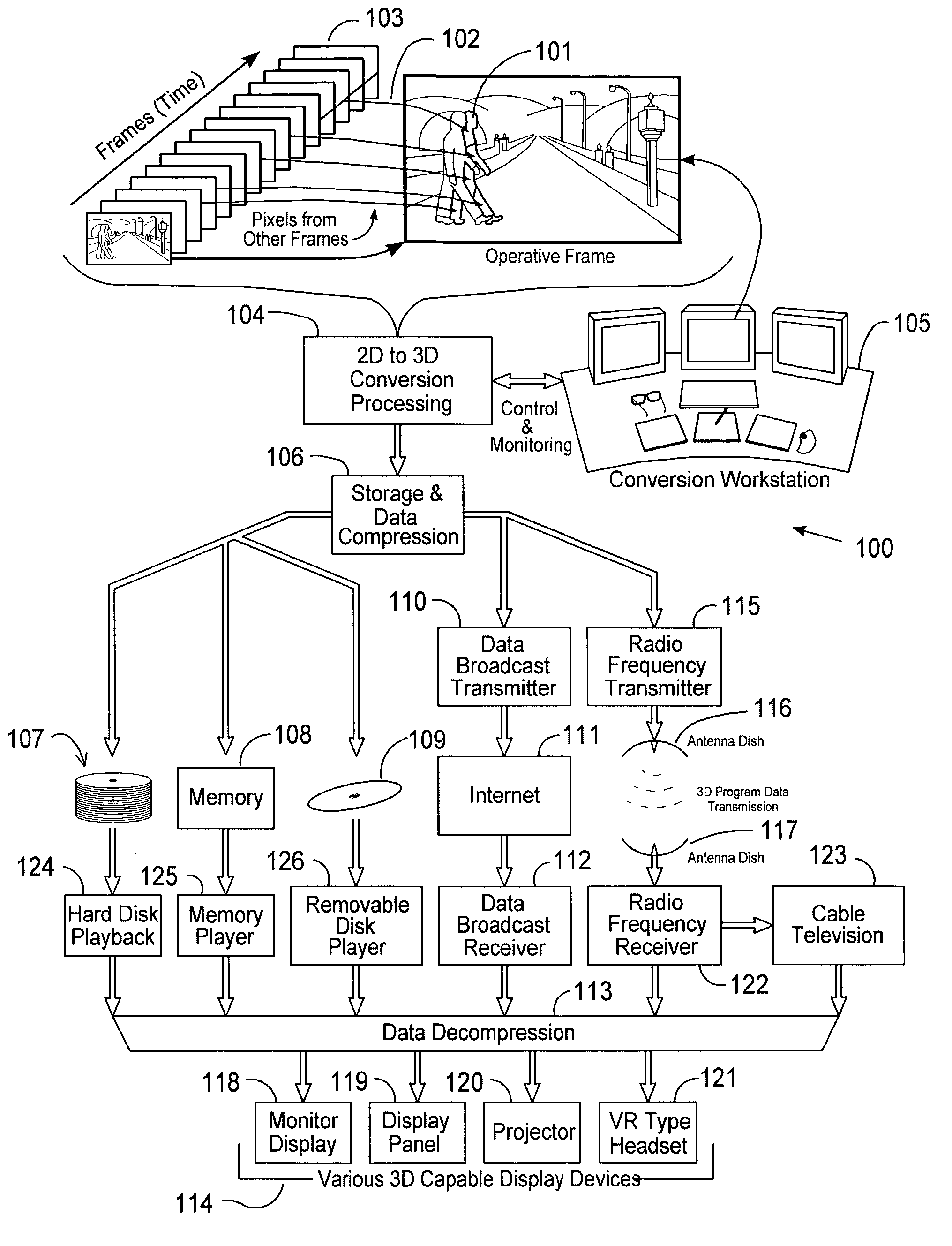Method of hidden surface reconstruction for creating accurate three-dimensional images converted from two-dimensional images
a three-dimensional image and hidden surface technology, applied in the field of methods, can solve the problems of inability to detect the edges of the difference between the left and right eye view, and the simple repetition of background pixels across the gap
- Summary
- Abstract
- Description
- Claims
- Application Information
AI Technical Summary
Benefits of technology
Problems solved by technology
Method used
Image
Examples
Embodiment Construction
[0021]The following is a detailed description of the best presently known mode of carrying out the invention. This description is not to be taken in a limiting sense, but is made merely for the purpose of illustrating the general principles of the invention.
[0022]In order to recreate a high quality, realistic three-dimensional image from a two-dimensional image, conversion artifacts must be eliminated, or at least minimized. The methods of the present invention eliminate or significantly reduce pixel fill artifacts. Various methods of the present invention generally involve retrieving missing pixel information for object separation gaps from other frames or images.
[0023]FIG. 1 shows an exemplary system 100 suitable for implementing the various methods of the present invention. During the process of converting images into 3D images, the original positions of image objects are shifted to adjust the perceived depths of the objects in the resulting 3D images forward or back toward the v...
PUM
 Login to View More
Login to View More Abstract
Description
Claims
Application Information
 Login to View More
Login to View More - R&D
- Intellectual Property
- Life Sciences
- Materials
- Tech Scout
- Unparalleled Data Quality
- Higher Quality Content
- 60% Fewer Hallucinations
Browse by: Latest US Patents, China's latest patents, Technical Efficacy Thesaurus, Application Domain, Technology Topic, Popular Technical Reports.
© 2025 PatSnap. All rights reserved.Legal|Privacy policy|Modern Slavery Act Transparency Statement|Sitemap|About US| Contact US: help@patsnap.com



